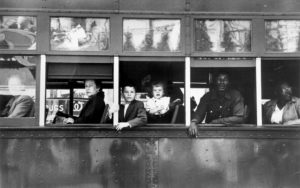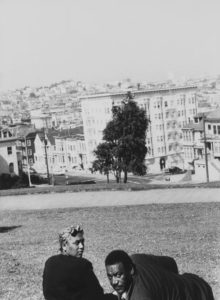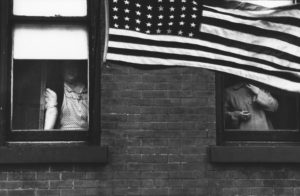American Witness. The Art and Life of Robert Frank, by RJ Smith, Da Capo Press
Robert Frank was the most influential photographer of the second half of the 20th century. And the basis for that influence is almost exclusively attributed to a single work, The Americans.
First published in France in 1958 and then the following year in the United States, The Americans presents a portrait of America that simultaneously summarizes the era and transcends it. Many of its images remain iconic and timeless more than 60 years later.

Frank’s framing and deceptively casual style of shooting coupled with his portrayal of life in America in the 1950s drew sharp criticism when it was originally published. But the book was ultimately recognized as the product of genius and has influenced and continues to influence generations of photographers.
In college in the early 1970s, I remember my photography instructor Jim Alinder talking about how Frank had something he wanted to say with The Americans, and then, having said it, had the wisdom to move on.
In American Witness, RJ Smith has produced an honest and loving portrait of the man behind the book, who was almost as famous for his persona as a reclusive, enigmatic and often contrarian artist as he was for his photographs.
Smith’s task was made more challenging by Frank’s disinterest in cooperating in any biography. But, in the end American Witness succeeds in telling Frank’s story, even without Frank’s voice. That is actually fitting, as Frank was resolute in insisting that his photographs should speak for themselves.
But there is more to Robert Frank than The Americans, as Smith’s biography makes clear, from Frank’s friendships with Allen Ginsberg, Jack Kerouac and other members of the “Beat Generation,” to his groundbreaking work in film to his later and more personal photographs.

Aside from The Americans, if most people know anything about Frank, it is probably from the legendary, but essentially banned film about the Rolling Stones, “Cocksucker Blues.” Smith digs deeply into the story, illuminating much about the film, about Frank and about the Rolling Stones.
Commissioned to produce a documentary about the Stones on tour, the film was deemed too damaging to the Stones to be released. The film’s gritty, unforgiving and often depressing look at the realities of life on the road did not fit into the vision that most Americans had of life traveling and performing with a rock and roll band. By the time the film was being made, the Rolling Stones were no longer just a group of working class guys from England who pushed the boundaries and served as a kind of anti-Beatles, but were a brand that had to be carefully managed.
The final nail in the coffin may have been the arrest of Keith Richards in Toronto on drug charges while the film was still being edited. Attorneys for the Stones believed that if the film were released, Richards would be permanently banned from the U.S.

But, as Smith tells the story of the legal and creative battles between Frank and the Rolling Stones, the ultimate and irreconcilable conflict may have been that it was a Robert Frank movie that happened to follow the Rolling Stones, rather than a Rolling Stones movie that happened to be made by Robert Frank.
Ultimately, the strength of American Witness is that it does not start and end with The Americans. That book has been endlessly analyzed and Smith has the good sense not to go down that rabbit hole, but rather paints a picture of the man though ninety years of life, educating and entertaining readers all the way through.
Like Frank’s own life, The Americans remains a central theme throughout the book, emerging and then fading and then emerging and fading again and again, but the real story and beauty of American Witness is how it captures the complexities and contradictions of a man who became a legend and artfully preserved that legend without surrendering his own identify.